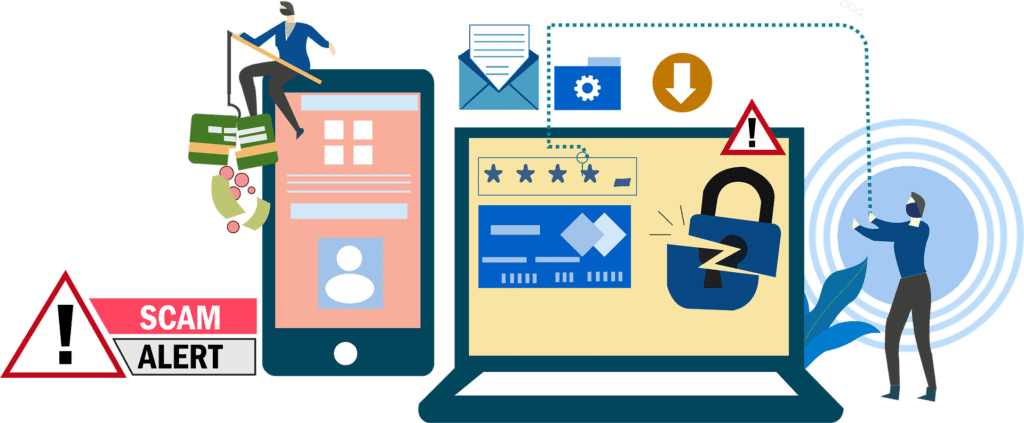In our digital age, email has become an essential communication tool, both in personal and professional life. However, this handy tool has also become a favored target for cybercriminals. Phishing, spam, malware: threats are increasing and endangering the security of our data. It is therefore essential to put in place effective protection measures.
What is phishing?

Phishing phishing in French, is a fraudulent technique consisting of usurping the identity of a person or an organization in order to obtain confidential information. Cybercriminals send deceptive, often well-crafted emails with the aim of stealing passwords, credit card numbers or other sensitive data.
Anti-spam and anti-phishing solutions
Faced with this growing threat, numerous solutions have been developed to protect users. anti-phishing tools play a vital role in securing inboxes. These software are capable of analyzing incoming emails and detecting those that are likely to be fraudulent. To do this, they use various criteria, such as the sender's address, the content of the message or the presence of suspicious links.
The importance of a professional email protection service

While antispam tools integrated into inboxes can be useful, they are not always enough to guarantee optimal protection. For enhanced security, it is recommended to use a professional email protection service. Solutions like Altospam, a French email protection service, offer advanced features to filter spam, phishing and other threats.
The benefits of a service like Altospam

- Detecting Emerging Threats: Cybercriminals are constantly innovating, developing new attack techniques. A professional service like Altospam is able to detect these new threats in real time and update its protection systems accordingly.
- Reduced false positive rate: Antispam tools can sometimes block legitimate emails by mistake. Professional services strive to reduce this false positive rate as much as possible, so as not to penalize the user experience.
- Expertise and support: The teams in these services have in-depth expertise in IT security and can provide you with personalized technical support.
In conclusion, email security is a major issue for all Internet users. By combining the antispam tools built into your inbox and a professional email protection service like Altospam, you can significantly reduce your chances of falling victim to phishing or other attacks.
FAQ: Securing your emails
What is a false positive in antispam?
A false positive occurs when an antispam tool blocks a legitimate email, misclassifying it as spam. This can happen due to filtering criteria that are too strict or poor learning of the tool.
How to recognize a phishing email?
Several elements can alert you:
- Sender address: This may be very close, but slightly different from a known organization.
- Message content: Phishing emails often contain spelling mistakes or clumsy wording. They can also put you under pressure to act quickly.
- Links and attachments: Be wary of links that redirect you to suspicious sites or attachments in unexpected formats.
What are the benefits of using an email protection service like Altospam?
Altospam and other similar services offer several advantages:
- Advanced Protection: They use cutting-edge technologies to detect the latest threats.
- Customization: You can often customize the filter rules to suit your needs.
- Technical support: A team of experts is available to answer your questions.
How do I protect my email account in addition to using an antispam tool?
- Strong passwords: Use complex and unique passwords for each of your accounts.
- Two-factor authentication: Enable this option if available to add an extra layer of security.
- Updates: Keep your operating system and software up to date.
- Awareness: Train yourself and your employees on the risks associated with cybercrime.
What should I do if I think I have been phished?
- Do not click on any links or open any attachments.
- Change your passwords immediately.
- Contact your bank or organization if financial information has been compromised.
- Report the incident to your Internet service provider and the appropriate agency.




